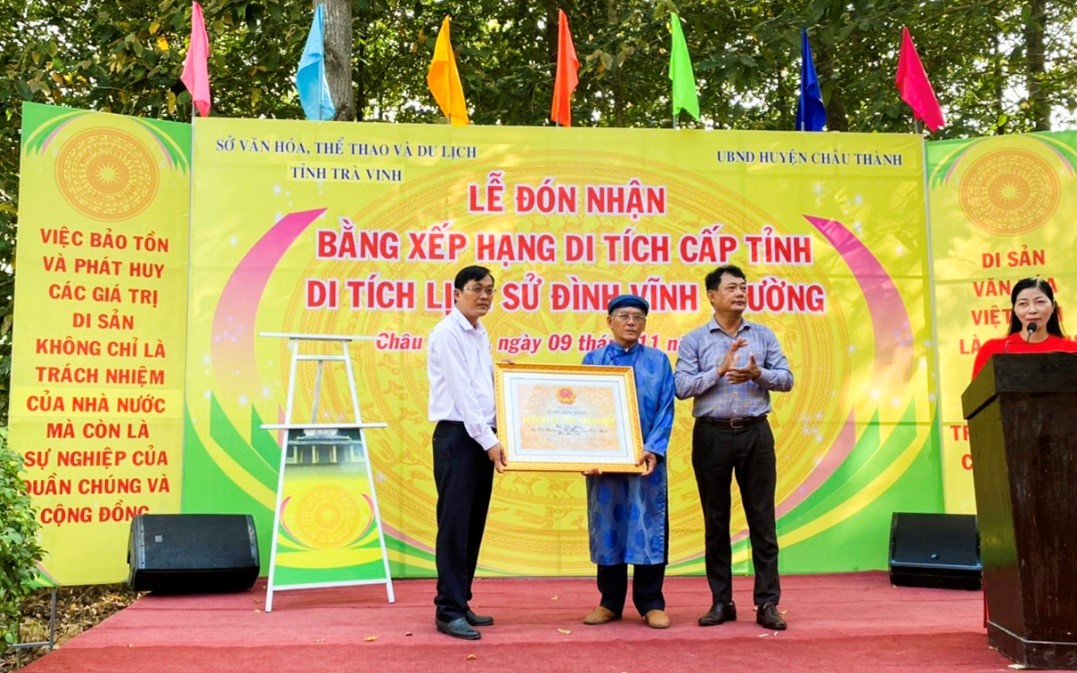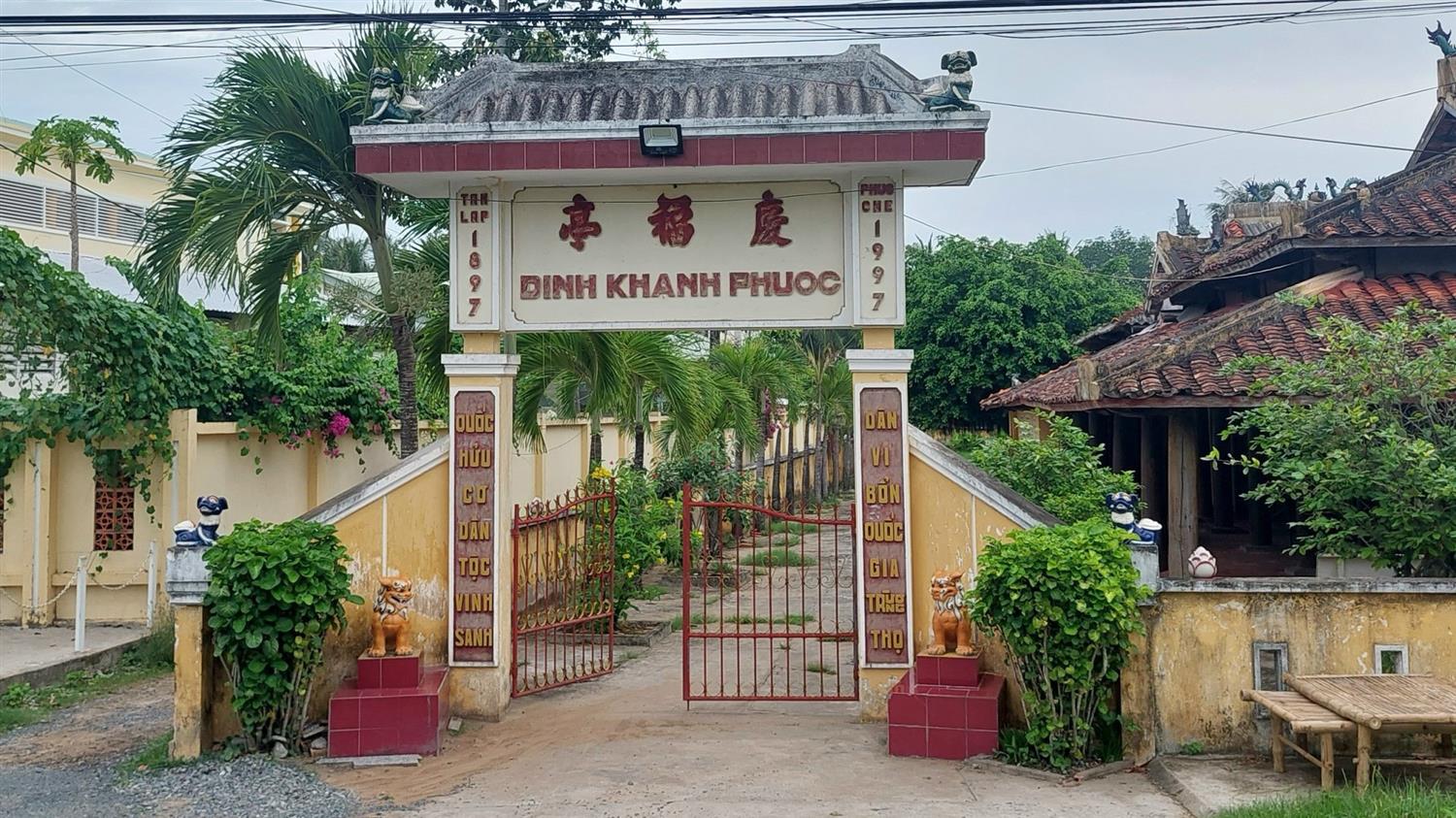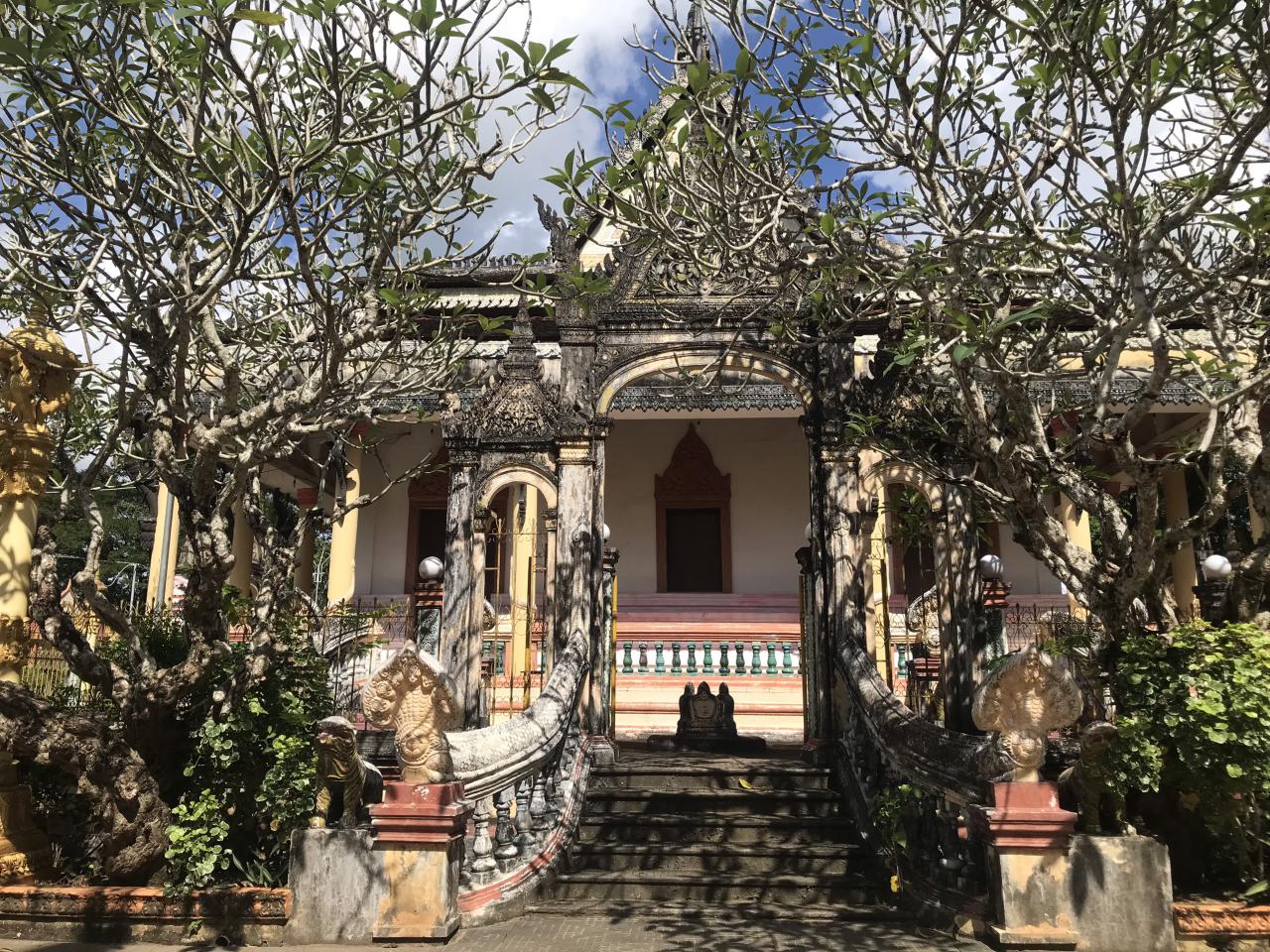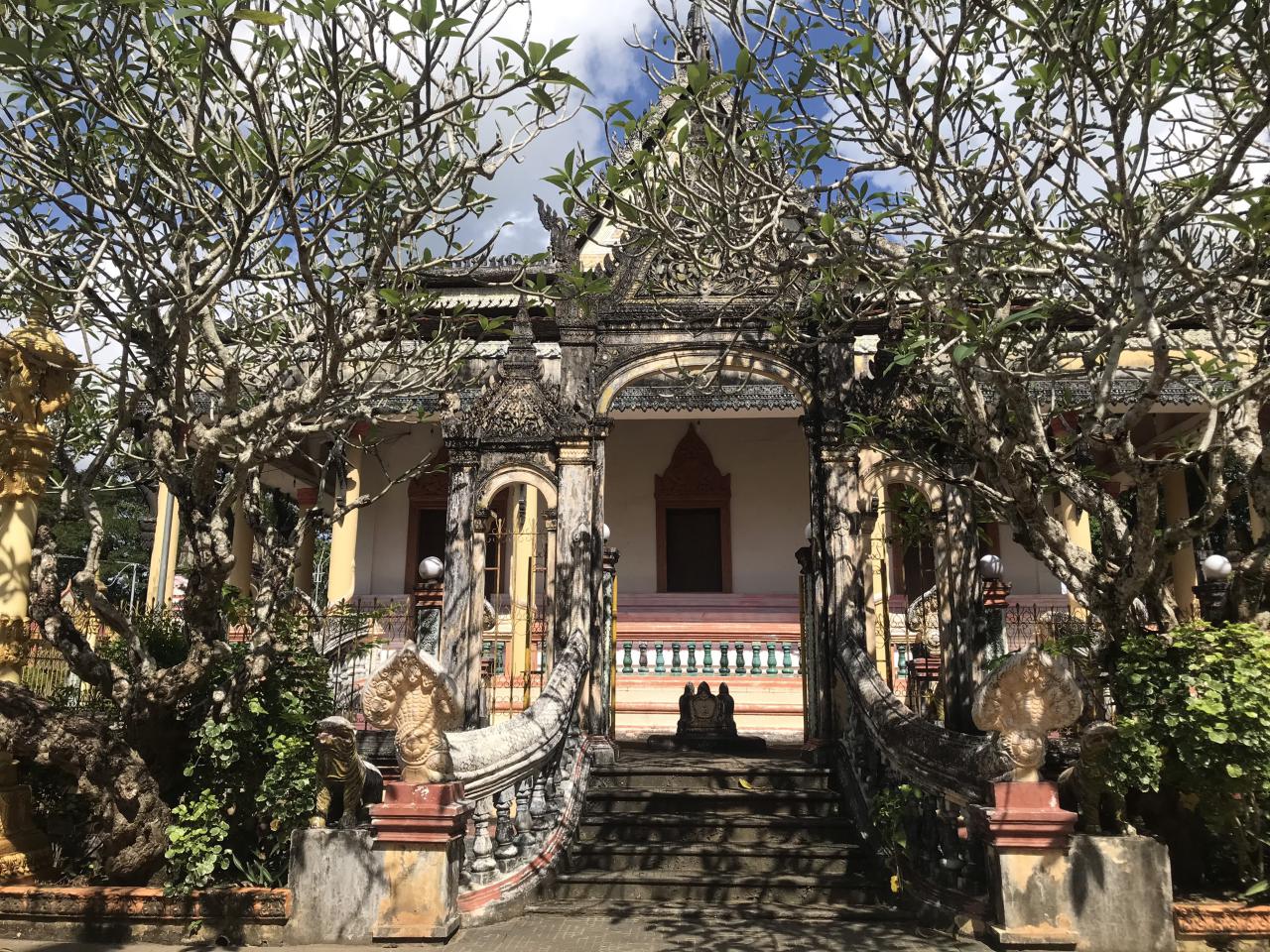Decision number: No. 1436/QD-UBND dated August 5, 2010.
Recognition address: Ba Tram Hamlet, Hung My commune, Chau Thanh district, Tra Vinh province.
Type of monument: Historical.
An My communal house relic, also known as Ba Tram communal house, is located about 10km northeast of Chau Thanh town and about 8km east of Tra Vinh city in Ba Tram hamlet, Hung My commune, Chau Thanh district, Tra Vinh province.
An My communal house was built in the 20s – 30s of the 19th century under the Minh Mang dynasty. Currently, the communal house still preserves an ordination plate of Bon Canh Thanh Hoang, dating back to Tu Duc’s fifth year (1852).
In the late 19th century, An My communal house was the gathering and operating place of many patriotic organizations, typically responding to the anti-French uprising movement of Tran Huu Dieu in Hung My andTran Van De (De Trieu) in Long Hau.
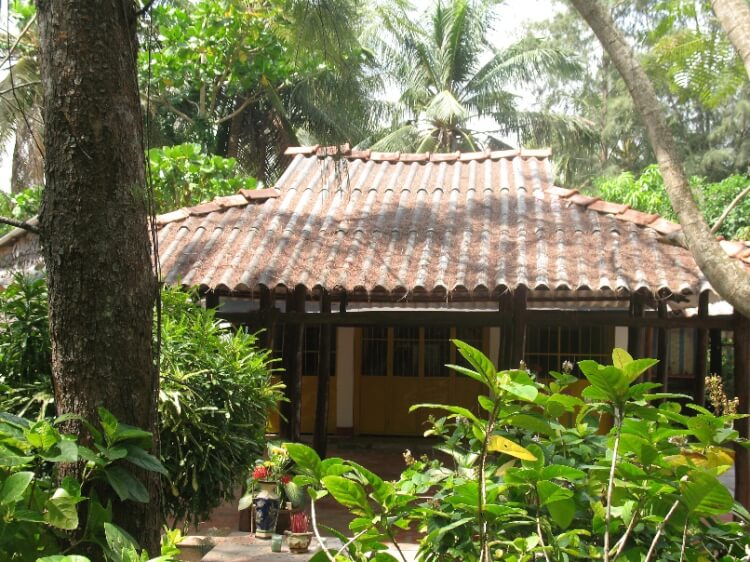
Turning to the twentieth century, An My communal house was a gathering place for patriots who participated in anti-French activities in the Thien Dia Hoi organization. When the Hung My Commune Communist Party Cell was established (1939), the communal house was also one of the places where the Cell regularly held meetings.
In May 1945, the Tra Vinh Pioneer Youth organization was born. The leadership of this organization was called the Tra Vinh Provincial Youth Pioneers. After that, the National Salvation Youth organization established by the Viet Minh Front was also arranged as the core of the Pioneer Youth. Taking advantage of the legality and publicity, the Young Pioneers organized connections and infiltrated the ranks of enemy soldiers to do enemy mobilization work, practice martial arts and military tactics. In Hung My, this organization was trained by comrade Bui Van Be (Bui Cat Vu), and comrade Nguyen Van Luan (Hai Luan) was the leader. Particularly in Ba Tram hamlet, the Youth Pioneers organization was commanded by Mr. Tran Van Ut. Participating in the movement were many people in the communal house. Everyone used sharpened nuglar bamboos, swords, machetes… to practice. The regular training spot for Hung My Pioneer Youth was Rach Von soccer field. The place where the logistics force organized cooking for the Young Pioneers to rest and eat was Cay Que temple and Mr. Bay Luan’s yard in Dai Thon. In Ba Tram hamlet and surrounding areas, the main location was Ba Tram communal house.
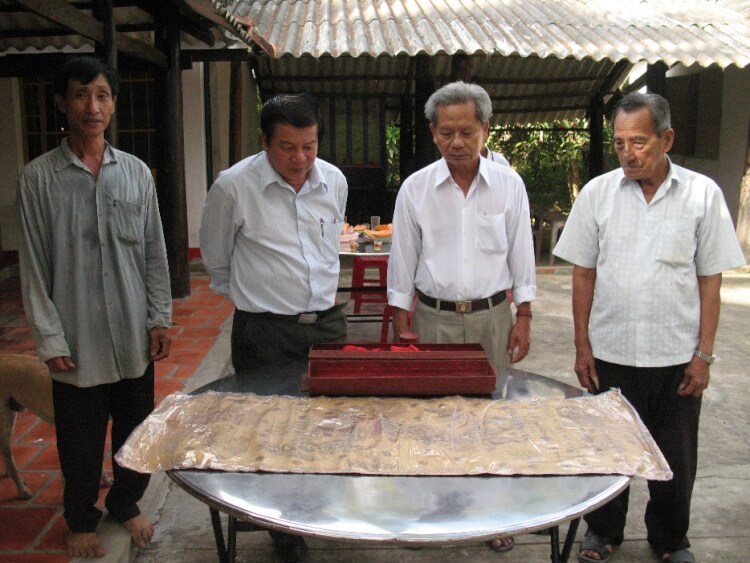
The General Uprising Order in August 1945 was announced throughout the country, Tra Vinh Provincial Party Committee quickly opened a conference to establish the Uprising Committee. After the successful uprising in the provincial capital and bases surrounding the provincial capital in Chau Thanh district, the districts and communes carried out the uprising.
In Hung My, the gathering committee was frightened by the revolutionary momentum that broke out, so they arrested many old women who entered the commune to hinder Viet Minh’s activities. The masses organized a protest, so the enemy had to release them. The Party cell organized a rally in Bai Vang hamlet in front of the enemy’s headquarters with hundreds of attendees including banners and slogans. Each Young Pioneer attending the rally worn two badges (the badge symbolizing the yellow flag with a red star of the Pioneer Youth, the other badge symbolizing the red flag with a yellow star of the Viet Minh). The rally included a speech calling on the masses to rise up and seize power. After that, the mass force led by the Pioneer Youth, including the masses and the Pioneer Youth who had practiced and lived at Ba Tram communal house, invaded the commune to besiege and seize power. The commune committee was forced to disperse easily because our people were secrectly worked there. The rest have been educated by us, who were skeptical or sympathetic to the revolution. The government quickly returned to the people.
Not long after the victory of the August Revolution, the French colonialists returned to invade our country. In early 1946, they captured Tra Vinh town, and a week later entered Hung My area. Responding to the “scorched earth resistance” movement launched by the revolutionary government, Ba Tram people dismantled the communal house and buried it, but before it could be done in time, the enemy came to occupy and station troops. Then they demolished the communal house and cut down many ancient trees in the grounds to make a mi-do (watchtower).
In 1954, after the Geneva Accords were signed, revolutionary forces gathered to the North, fearing that the enemy would continue to occupy the station, people in the hamlet brought the remaining wooden columns and merged them with the Lady Chua Xu temple and rebuilt it about 800m away from the originally-located communal house. In 1992, people again contributed their efforts and resources to move the communal house back to its old location. During the year, An My Communal House holds the Upper Field Ceremony (After the farming season) on December 12 and 13 and the Lower Field (Before the farming season) Ceremony on the 19th and 20th of the 4th lunar month.
On August 5, 2010, the People’s Committee of Tra Vinh province issued Decision No. 1436/QD-UBND classified An My communal house as a provincial-level historical relic.
Article source: Website of Tra Vinh Provincial Monuments Management Board
